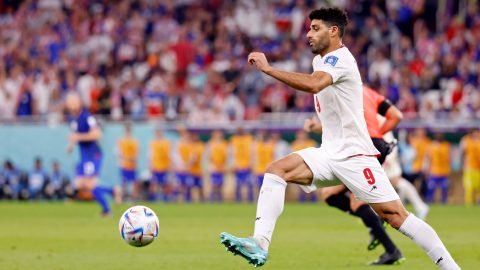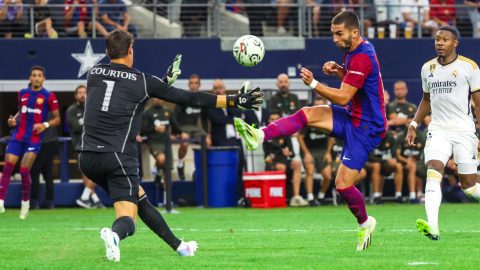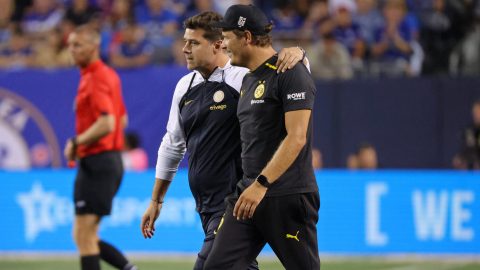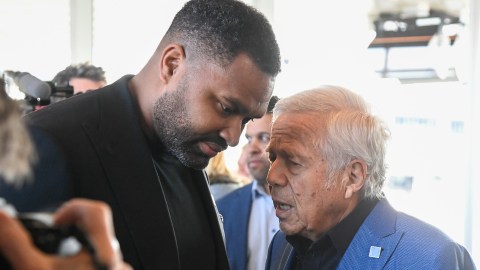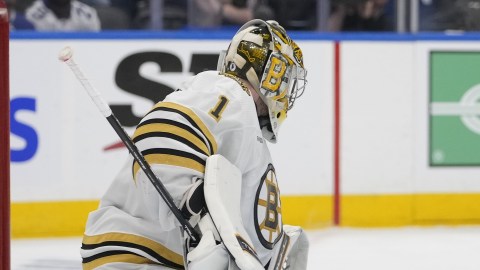The United States escaped Eden Park on Tuesday with a draw against Portugal, and while the Americans made the round of 16, they enter the 2023 Women’s World Cup knockout round with multiple questions.
Portugal nearly pulled off a huge upset in stoppage time, but Ana Capeta’s shot hit the left post. At worst, the U.S. needed a draw to move past Group E and enter the round of 16, but a win would have given it a chance to win the group, which the Netherlands pulled off with a 7-0 win over Vietnam.
“It’s not the result we wanted, but we move forward,” Alex Morgan told reporters, per the Associated Press’ Anne Peterson.
Story continues below advertisement
The United States produced results, but the process did not manifest in its first three Women’s World Cup matches. On paper, the team should have ridden into the round of 16 with ease, but the group played like one of the worst U.S. teams in recent memory in the group stage.
Here are five takeaways from the United States’ tie against Portugal.
Vlatko Andonovski is out of his depth
There were two changes to the U.S. starting lineup: Rose Lavelle for Savannah DeMelo and Lynn Williams for Trinity Rodman. They were necessary changes, but the on-field play was a mess. Credit to Portuguese fullbacks Ana Borges and Catarina Amado, but there was zero cohesion in the United States’ attack, especially in the midfield and on the wings. Whenever Sophia Smith and Williams got the ball, they stood there waiting for movement that never came, which allowed turnovers and counter-attacking opportunities. It favored the left side for no clear reason, and that predictability helped Portugal’s defense and kept it organized in the midfield. Smith was asked to be a creator and playmaker but couldn’t win her one-on-one battles and wasn’t given help. The U.S. played a second slower than required because of the lack of off-ball movement and unclear ideas of how to break down the Portuguese defense.
“It’s not the result we wanted, but we move forward”
Alex Morgan on Tuesday’s result
Again, Portugal deserves credit for making decisive passes against the United States press and connecting passes that helped it keep possession. But the blame is on the players for not finding open space and figuring things out themselves, and Andonovksi didn’t help matters by not adjusting properly coming out of the half.
Story continues below advertisement
Confusing substitutions
Andonosvki rightfully was criticized for his one substitute in last week’s match against the Netherlands. But after bringing on Megan Rapinoe in the 61st minute, he waited until the 84th minute to use the rest of his substitutes. This clearly showed that while the United States has one of the best rosters in the tournament, Andonosvki doesn’t trust half the roster. Rapinoe should be used to help protect a lead, not when the U.S. could use a goal or when it hopes to not concede a goal. Rapinoe is a legend, but at 38 years old, she just can’t play in high-leverage moments, and her sloppy passes could have cost the United States. Alyssa Thompson could be a dynamic threat, but the 18-year-old only was brought on in the last minute of stoppage time.
Kristie Mewis and Ashley Sanchez have not played in the Women’s World Cup yet despite Andi Sullivan bringing next to nothing. It appears Andonosvki would rather take the perceived reliability of Sullivan rather than take a chance with Mewis or Sanchez. He also could have used Julie Ertz as a defensive midfielder, but he seemingly doesn’t trust Alana Cook, who was believed to be the primary replacement for Becky Sauerbrunn.
Naomi Girma up to task
The San Diego Wave defender was the lone bright spot amid a horrible outing from the United States. Girma did well to cover for Ertz and Crystal Dunn whenever they moved up into the attack. She disrupted the Portuguese attack and kept the defense as organized as possible — there also was a lack of cohesion between the back line and the midfield.
Story continues below advertisement
Midfield replacements
Lavelle received her second yellow card in the group stage, which means she will miss the next match. DeMelo, who didn’t play Tuesday, likely will start in her place like she did in the first two matches. Sullivan should not start for the rest of the tournament. Portugal crowded the midfield and pressured the U.S. whenever it had the ball, and there was no outlet for a player to go to. Ertz and Sanchez could solve that issue and there shouldn’t be a dropoff in defense. The big thing for the rest of the tournament is Andonosvki must trust his players. If you believed in them enough to name them to the roster, then you must trust they will be ready whenever called upon.
Looking ahead to Sweden
Sweden plays Argentina at Waikato Stadium on Wednesday to close out Group G action. It should win that match and win the group, which would set up a United States-Sweden matchup. It would be the seventh time the sides face off at the Women’s World Cup, and the U.S. is 4-1-1 all-time in the past six meetings with 11 goals scored and five conceded. Kosovare Asllani and Stina Blackstenius will really test the United States defense, and it will need to improve its play significantly to move on to the quarterfinals. There definitely is a reality where the U.S. continues to play terribly but still manages to earn results, but for the sake of fans, the Americans have the get their tactics and style of play in order to fully reach their ceiling.
The United States will play the winner of Group G at Melbourne Rectangular on Sunday at 5 a.m. ET.
Featured image via Jenna Watson/USA TODAY Sports Images




